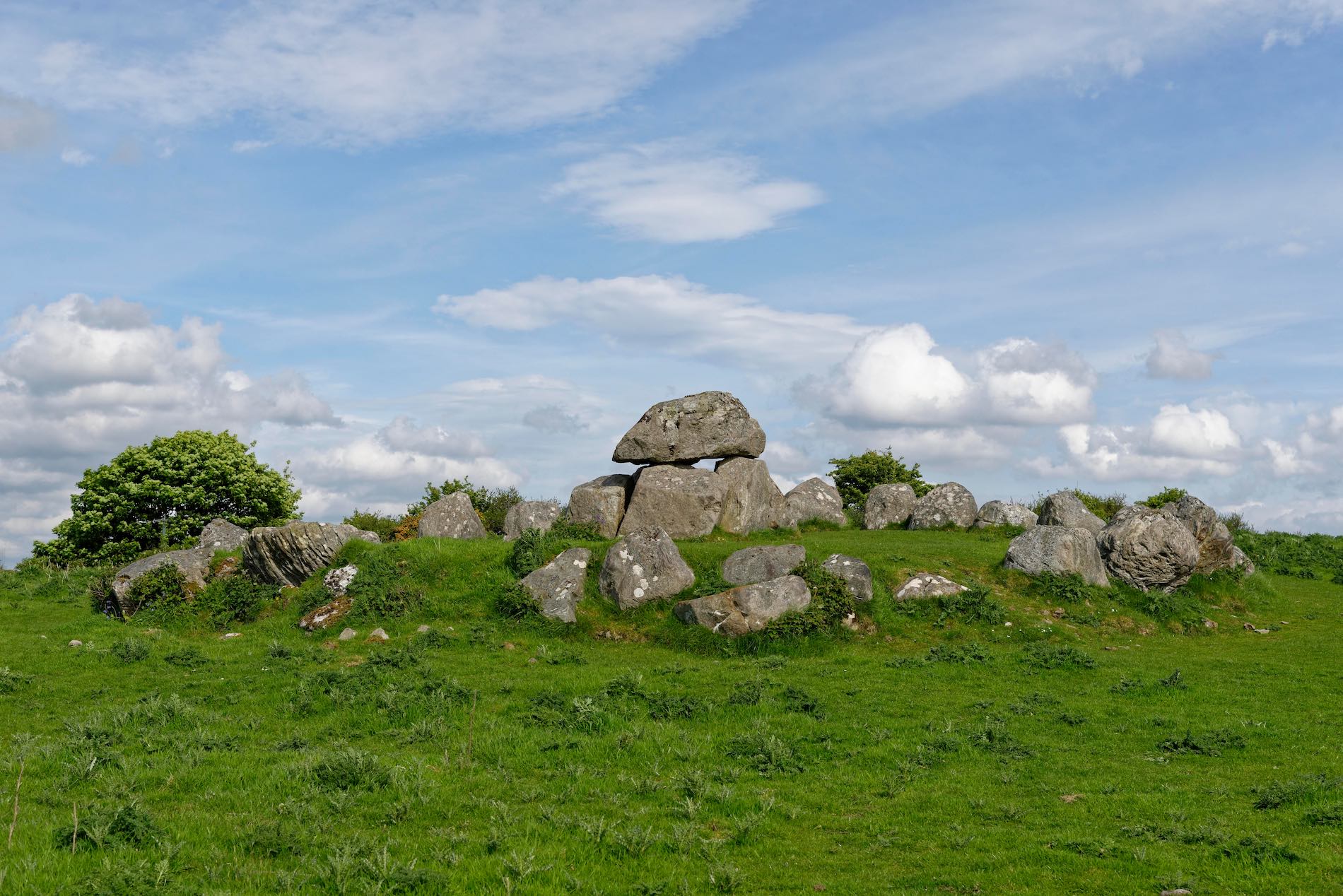

Carrowmore Megalithic Cemetery
Under the watchful eye of Ben Bulben, explore the prehistoric realm of Carrowmore, where megalithic monuments stand as silent witnesses to ancient rituals and the legacy of Ireland's early inhabitants.
Ancient history can be found everywhere around the island of Ireland. But nowhere are the lives and rituals of our Neolithic people more visible than in the passage tombs that dot the landscape. These megalithic monuments can be found all over the island and are thought to date back around 5,000 years. Some of the more famous are Newgrange and Dowth. Less well known is the sacred passage tomb landscape of County Sligo. In fact, the Carrowmore Megalithic Cemetery has even made it onto Ireland’s Tentative List of World Heritage Sites.
Close to Sligo town on the west coast, Carrowmore is comprised of more than 35 passage tombs that were constructed a mind-blowing 6,000 years ago. It’s the oldest and densest collection of passage tombs anywhere in Ireland and is situated against the scenic backdrop of Sligo’s rural landscape. Symbolically, it’s overlooked by Queen Maeve’s Cairn on Knocknarea mountain, said to be the final resting place of Ireland’s mythical Iron Age warrior queen. A small cottage contains an interesting exhibition that will tell you about the history of Carrowmore, but to get the most from the experience, visit with a tour guide who can unlock the many secrets of this ancient place.


Carrowmore Megalithic Cemetery, County Sligo
Need to know
The site is around 8km (5 miles) from Knocknarea Hill – home to the breathtaking Queen Maeve Trail.
Facilities include fully guided tours, toilets, a car park and a small visitor centre. For more information about transport and accessibility, email carrowmoretomb@opw.ie or call 071 916 1534.
Tickets range from €5 to €13 and we recommend bringing a pair of hiking boots to combat the site's rough terrain.









































